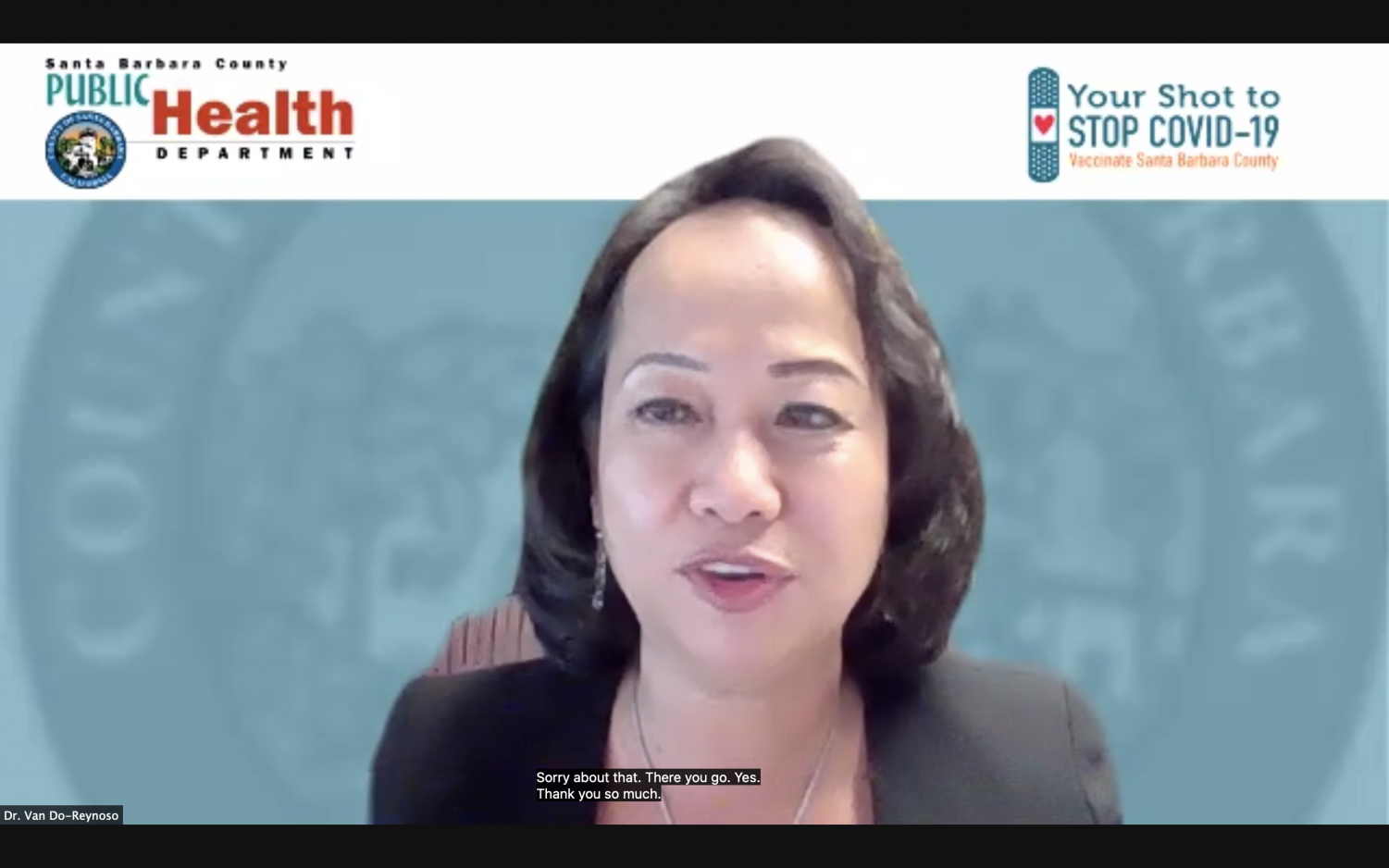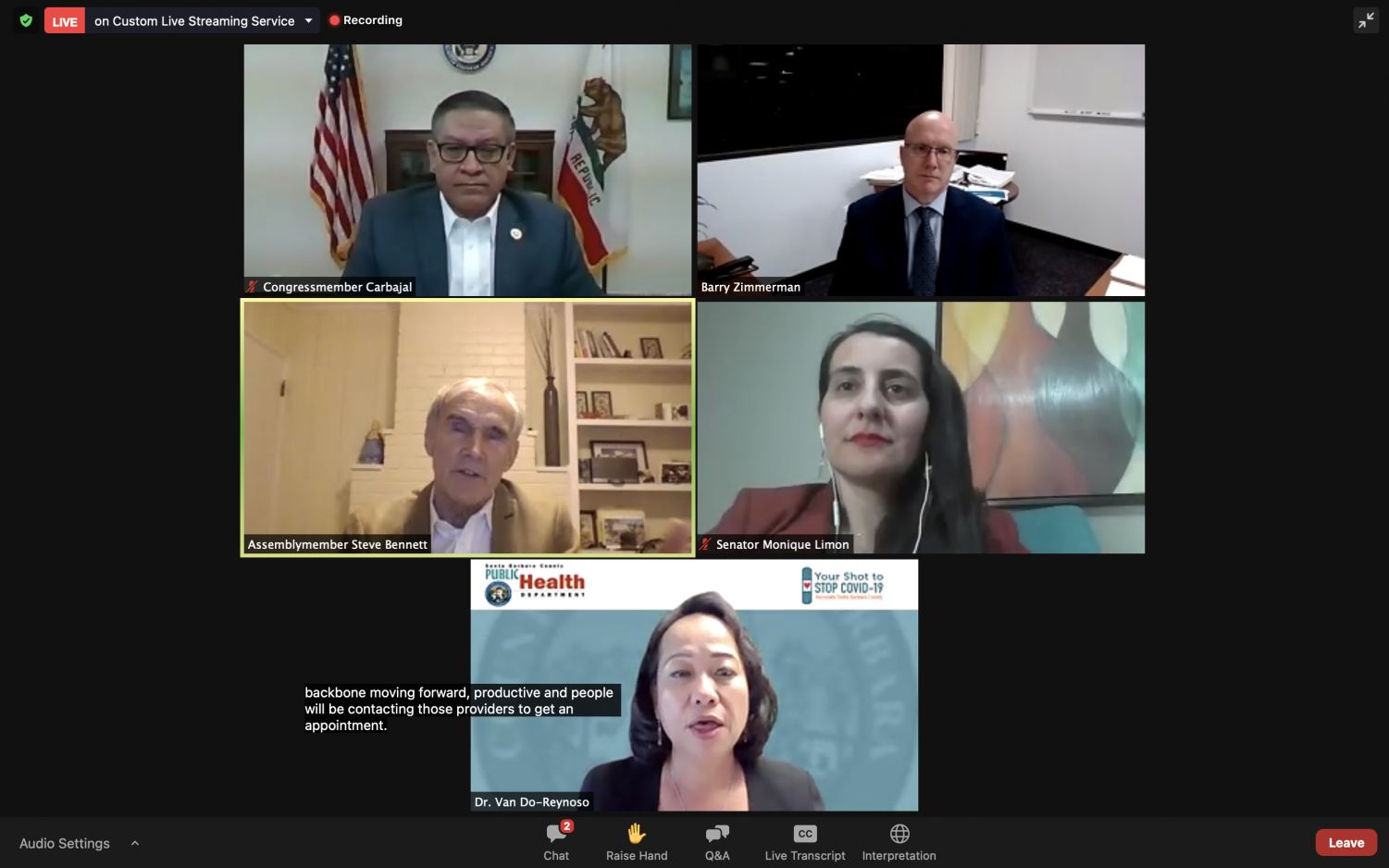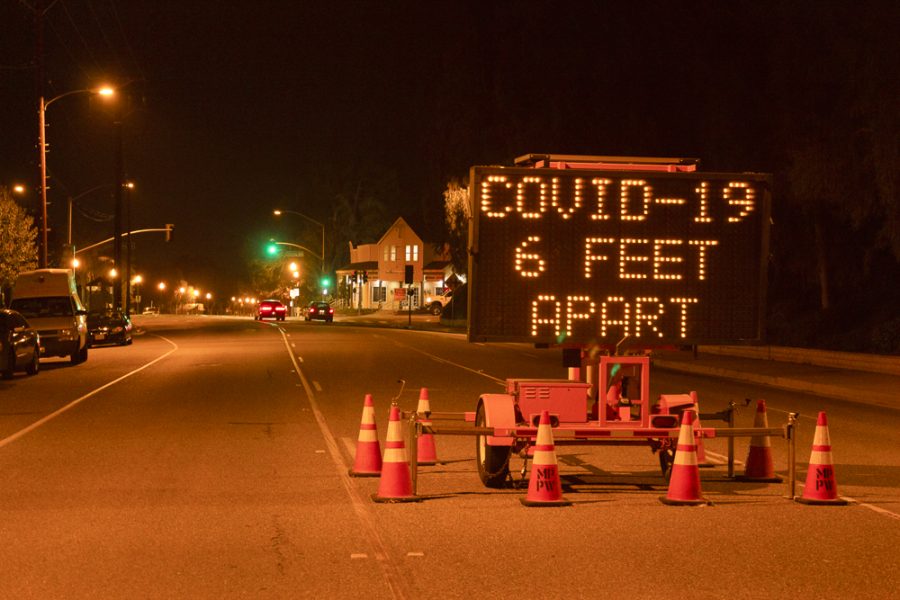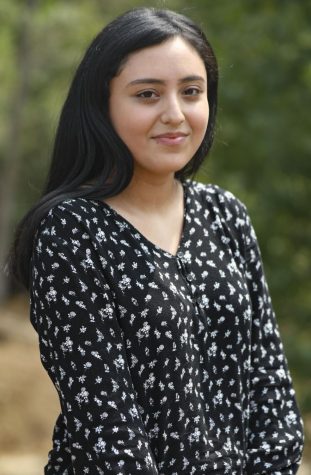COVID-19 vaccine distribution continues to rollout for Ventura and Santa Barbara County
A sign on Princeton Ave. in Moorpark alerts people to social distancing measures during the coronavirus pandemic on May 13, 2020. Photo Credit: Justin Downes
February 9, 2021
[Update] As of Feb. 9, Ventura County is now allowing persons aged 65 and older can make an appointment to receive the vaccine.
On Jan. 28, 2021 Senator Monique Limón, Congressman Salud Carbajal and Assembly member Steve Bennett hosted a virtual town hall to talk about the COVID-19 vaccine. Public Health experts talked about the safety, effectiveness, and phases of the vaccine distribution. The COVID-19 vaccine rollout has begun in the State of California.
The State of California has vaccinated more than 3 million residents. As of Feb. 1, 2021, the total doses administered in Ventura County is 73,480 and in Santa Barbara County is 38,334. To make sure the pace of vaccination increases, the state launched the MyTurn website. The site will help California residents make vaccination appointments, find out if they are eligible for the COVID-19 vaccine and if they are ineligible they can sign up to be notified when they become eligible.

Dr. Van Do-Reynoso, Santa Barbara County Public Health Department Director, explained the effectiveness of the MyTurn platform.
“(Providers can use) the platform to schedule vaccination clinics, to enroll community members and to record the vaccinations so that it becomes a very seamless process.” Do-Reynoso said. “The state is moving towards this new third party administration… in order to more quickly distribute vaccines to our community members as well as collect the data that is needed.”
Last week Santa Barbara received 44,825 vaccines for the county. Of the allocation that the county has received, approximately 80% is to hospitals, community clinics, medical providers, and pharmacies. The remaining 20% public health allocation is being used to for community vaccination sites in Santa Barbara, Lompoc, and Santa Maria. Currently, Santa Barbara County is offering vaccines to people 75 years old and above, as well as healthcare workers with current direct patient contact.
Do-Reynoso touched upon the 65 plus criteria other counties throughout California are using and Santa Barbara County’s current distribution plan.
“It is frustrating to see other counties offering that, but because of our limited number of vaccines, and because of our data of whose vulnerable in our community to becoming very sick and suffering severe outcomes, fatal outcomes, even we as a community, in partnership with our health care providers, decided to make the decision to focus on the most vulnerable segments of our community, and that is at this point the 75 plus,” Do-Reynoso said.
Barry L. Zimmerman, Chief Deputy Director of the Ventura County Health Care Agency, spoke about the efforts Ventura County is doing and the similarities with Santa Barbara County.
“Our goal is to get back seems to those who are at highest risk. And to start off, we too have limited our access to 75 and older population, which in our county has proven to be the highest risk and the most likely that end in a death within the hospital, if they are hospitalized,” Zimmerman explained.

The primary way for an individual to get access to an appointment and a vaccination center is through the county’s website or venturacountyrecovers.org. For those who do not have access to a computer, internet, or may have language barriers, they can call the local registration center at 805-477-7161. The local registration center will help individuals register, have access to multiple languages, and address individuals who are trying to get appointments.
At the federal level, the United States President Joe Biden, plans to utilize the Defense Production Act to help expedite and expand the supply of vaccines. President Biden has set an ambitious goal of fully vaccinating 300 million Americans plus, nearly the entire US population, by the end of the summer or early fall.
Congressman Salud Carbajal, addressed the COVID-19 response to date.
“As we move forward, finally with a cohesive and strategic national COVID-19 response, we must address the deficiencies and inadequacies of the response to date,” Carbajal said. “We cannot change the past, but we can develop and implement an effective and collaborative national strategy once and for all, with our state and local communities moving forward.”







